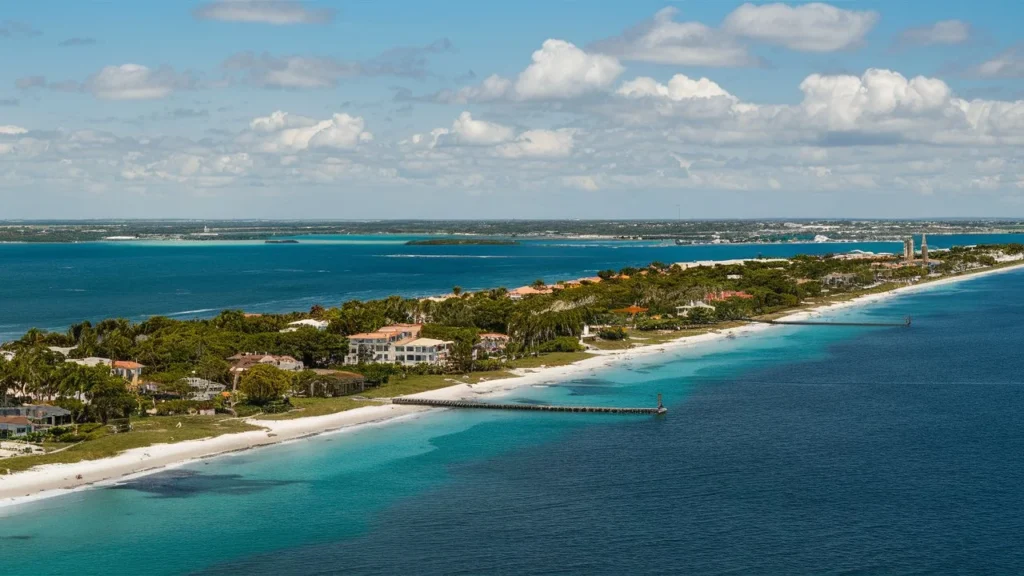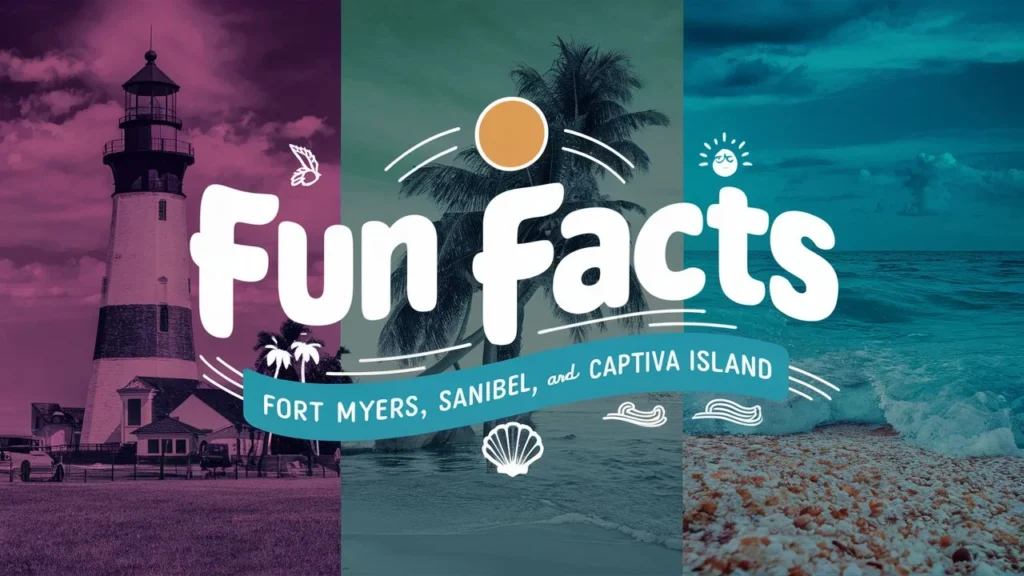- Introduction
- 1. The Birthplace of the Light Bulb
- 2. Shelling Paradise on Sanibel Island
- 3. Captiva Island’s Mysterious History
- 4. A Birdwatcher’s Paradise
- 5. The Unique Ecosystem of the Calusa Heritage Trail
- FAQ'S
- What are the best activities to do in Fort Myers?
- When is the best time to visit Sanibel Island for shelling?
- Are there any family-friendly attractions in Captiva Island?
- Can I see wildlife at the J.N. 'Ding' Darling National Wildlife Refuge?
- What historical significance does Fort Myers have?
- Is there an entrance fee for the Edison and Ford Winter Estates?
- What makes Sanibel Island unique compared to other Florida beaches?
- Explore the Wonders of Fort Myers, Sanibel, and Captiva Island
Introduction

Fort Myers, Sanibel, and Captiva Island are not just beautiful vacation spots; they are treasure troves of history, nature, and unique experiences waiting to be uncovered. Whether you’re a local or a visitor, these locations offer fascinating stories and fun facts that enhance your appreciation of this stunning part of Florida. In this blog post, we’ll explore five fun facts about these islands that will make you want to pack your bags and head to the Sunshine State!
- 1. The Birthplace of the Light Bulb
- 2. Shelling Paradise on Sanibel Island
- 3. Captiva Island’s Mysterious History
- 4. A Birdwatcher’s Paradise
- 5. The Unique Ecosystem of the Calusa Heritage Trail
1. The Birthplace of the Light Bulb
One of the most intriguing facts about Fort Myers is its connection to the iconic inventor Thomas Edison. In 1885, Edison built a winter estate in Fort Myers, where he spent many winters working on his inventions. The estate, now known as the Edison and Ford Winter Estates, is a must-visit for anyone interested in history and innovation.
Key Insight: The estate features a museum, botanical gardens, and the famous Edison laboratory, showcasing many of his inventions and innovations.
Did You Know? Edison’s friend and fellow inventor, Henry Ford, also had a winter home nearby, making this area a hotspot for innovation in the early 20th century.
2. Shelling Paradise on Sanibel Island
Sanibel Island is renowned for its beautiful beaches and, more importantly, its incredible shelling opportunities. The island is located on the Gulf of Mexico and is uniquely positioned to collect a wide variety of seashells. In fact, Sanibel is often referred to as the “Shelling Capital of the World.”
Key Insight: Over 400 different types of shells can be found on Sanibel’s shores, including the prized Junonia shell.
Fun Fact: The island hosts an annual Sanibel Shell Festival, attracting shell enthusiasts from all over the globe to celebrate this unique hobby.
3. Captiva Island’s Mysterious History
Captiva Island has a rich and somewhat mysterious history. It was once a haven for pirates and smugglers in the 19th century. The island’s name is believed to have originated from the Spanish word “captiva,” meaning “captured,” as it was said to be a place where pirates would capture ships and their cargo.
Key Insight: Today, Captiva is a serene getaway known for its stunning sunsets and luxurious resorts, but its past adds an intriguing layer to its charm.
Did You Know? The famous author, Ernest Hemingway, was known to visit Captiva Island, where he found inspiration for some of his works.
4. A Birdwatcher’s Paradise
The region surrounding Fort Myers, Sanibel, and Captiva is a haven for birdwatchers. The J.N. “Ding” Darling National Wildlife Refuge on Sanibel Island is home to over 245 species of birds, making it one of the best birdwatching spots in the United States.
Key Insight: The refuge offers guided tours, walking trails, and a scenic drive, allowing visitors to experience the diverse wildlife, including alligators, manatees, and various bird species.
Fun Fact: The refuge was named after Jay Norwood “Ding” Darling, a famous cartoonist and conservationist who played a significant role in wildlife preservation.
5. The Unique Ecosystem of the Calusa Heritage Trail
The Calusa Heritage Trail, located in the heart of the J.N. “Ding” Darling National Wildlife Refuge, offers visitors a glimpse into the lives of the Calusa Indians, who inhabited the area for thousands of years. The trail features a series of archaeological sites and educational exhibits that highlight the rich history and culture of the Calusa people.
Key Insight: The trail is designed for self-guided tours, allowing visitors to explore at their own pace while learning about the unique ecosystem and the impact of the Calusa on the region.
Did You Know? The Calusa were known for their advanced fishing techniques and intricate shell tools, showcasing their deep connection to the land and water.
FAQ’S
What are the best activities to do in Fort Myers?
A: Fort Myers offers a variety of activities, including visiting the Edison and Ford Winter Estates, exploring the beautiful beaches, enjoying water sports, and dining at local seafood restaurants. Nature lovers can also explore the nearby parks and wildlife refuges.
When is the best time to visit Sanibel Island for shelling?
A: The best time for shelling on Sanibel Island is during the winter months, particularly from December to April. During this time, the beaches are less crowded, and the weather is pleasant, making it ideal for beachcombing.
Are there any family-friendly attractions in Captiva Island?
A: Yes! Captiva Island is family-friendly with activities such as kayaking, paddleboarding, and visiting the local beaches. The island also offers nature tours and wildlife viewing opportunities that are perfect for families.
Can I see wildlife at the J.N. ‘Ding’ Darling National Wildlife Refuge?
A: Absolutely! The refuge is home to a diverse range of wildlife, including over 245 species of birds, alligators, manatees, and various marine life. Visitors can explore the refuge through walking trails, guided tours, or a scenic drive.
What historical significance does Fort Myers have?
A: Fort Myers is historically significant due to its connection to Thomas Edison and Henry Ford, who both built winter estates in the area. The city played a role in the development of Florida and has a rich history tied to early American innovation.
Is there an entrance fee for the Edison and Ford Winter Estates?
A: Yes, there is an entrance fee to visit the Edison and Ford Winter Estates. The fee varies depending on the type of tour you choose, but it typically includes access to the museum, gardens, and the historic homes.
What makes Sanibel Island unique compared to other Florida beaches?
A: Sanibel Island is unique due to its shelling opportunities, its commitment to environmental preservation, and its absence of high-rise buildings. The island’s natural beauty and laid-back atmosphere make it a peaceful retreat for visitors.
Explore the Wonders of Fort Myers, Sanibel, and Captiva Island
Fort Myers, Sanibel, and Captiva Island are not just picturesque destinations; they are filled with rich history, unique ecosystems, and fascinating stories. From Thomas Edison’s winter estate to the incredible shelling opportunities on Sanibel Island, there’s something for everyone to discover. Whether you’re a history buff, nature lover, or simply looking for a relaxing getaway, these islands offer a perfect blend of adventure and tranquility.
So, what are you waiting for? Pack your bags and explore the hidden gems of Fort Myers, Sanibel, and Captiva Island!

